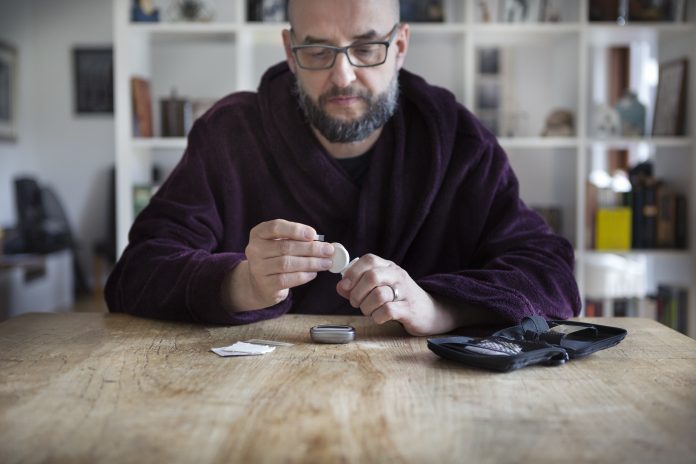
Australian and Norwegian researchers report they have developed a new method of delivering insulin via nano-carriers which may allow diabetes patients to take it orally as opposed to daily insulin injections. The new technology, described in the journal Nature Nanotechnology, notes that its nano-carriers are 1/10,000th the width of a human hair, and can be ingested via a capsule, or potentially incorporated in a piece of chocolate.
“This way of taking insulin is more precise because it delivers the insulin rapidly to the areas of the body that need it most,” said Peter McCourt, PhD, a professor in the department of medical biology at UiT The Artic University of Norway. “When you take insulin with a syringe, it is spread throughout the body where it can cause unwanted side effects.”
The development of the potentially new oral diabetes treatment, builds on a discovery made a year ago by UiT and University of Sydney, Australia, researchers who found that it was possible to deliver medicines directly to the liver using nano-carriers. While researchers have been attempting to develop nano-carriers that can deliver insulin to the liver, the previous version would break down in the stomach, thus not reaching the areas in the body where it was needed.
But now, McCourt noted, the team has created a coating that protects the insulin carriers from being broken down by stomach acid and other digestive enzymes keeping the medicine safe until it eventually reaches the liver. Even better, the coating is broken down in the liver by enzymes that are only active when blood sugar levels are high, releasing the insulin to act in the liver, muscle and fat, to then lower blood sugar levels.
“This means that when blood sugar is high, there is a rapid release of insulin, and even more importantly, when blood sugar is low, no insulin is released,” said Nicholas J. Hunt, PhD, of the University of Sydney, co-leader of the project. This method provides a better method of insulin delivery for the patient versus injections because it significantly reduces the odds of a hypoglycemic event, and provides for the release of insulin only as dictated by the patient’s needs, as opposed to releasing it all at once via a shot.
Further, the researchers noted, the oral diabetes treatment delivery is much more like how insulin release works in healthy people where the pancreas produces insulin, which then moves through the liver where most of it is absorbed to maintain healthy blood sugar levels. The nano-carriers release insulin in the liver, where it either can be taken up in the liver, or enter the blood stream.
“When you inject insulin under the skin with a syringe, far more of it goes to the muscles and to adipose tissues that would normally happen if it was released from the pancreas, which can lead to the accumulation of fats,” the researchers wrote. “It can also lead to hypoglycemia, which can potentially be dangerous for people with diabetes.”
So far, this oral diabetes treatment has been tested on nematodes, mice, rats, and most recently successfully tested on baboons at the National Baboon Colony in Australia. The oral insulin is now slated to be tested in human, trials beginning in 2025 by Endo Axiom, a spinout company that will seek to commercialize the drug.
In the Phase I trial we will investigate the safety of the oral insulin and critically look at the incidence of hypoglycemia in healthy and type 1 diabetic patients. Our team is very excited to see if we can reproduce the absent hypoglycemia results seen in baboons in humans as this would be a huge step forward,” said Hunt.
If the Phase I trial shows the treatment is safe for humans, it will then be studied for how it can be a replacement for insulin injections by patients. The hope is that successful testing of this potential new treatment method for diabetes can be available within to two to three years.













